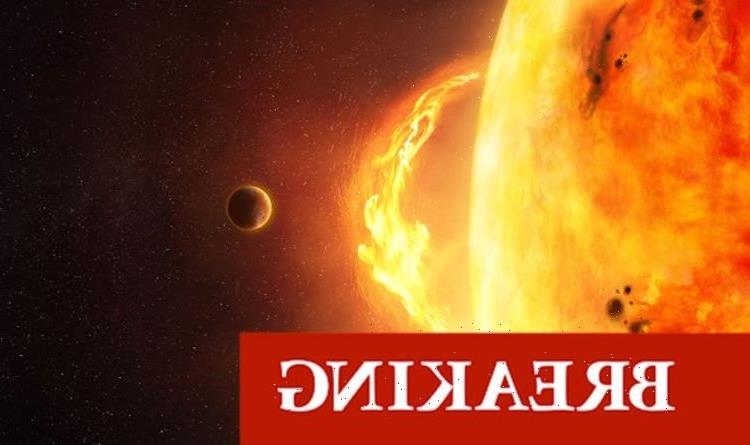Solar storm: NASA captures the moment a sunspot 'explodes'
We use your sign-up to provide content in ways you’ve consented to and to improve our understanding of you. This may include adverts from us and 3rd parties based on our understanding. You can unsubscribe at any time. More info
A coronal mass ejection (CME) of plasma and magnetic field has escaped the Sun and is forecast to possibly strike later this week. The CME was cast towards the planet on Monday when a large filament of magnetism lashed out from the Sun’s bottom half.
Dr Tamitha Skov, a space weather physicist warned that a recent filament eruption from the Sun will deliver a glancing blow to the south of the planet, causing mild disruption.
She said: “NASA predictions show a recent filament eruption looks to deliver a glancing blow to the south of Earth by late December 11.
“Expect a mild disturbance, but the aurora is possible at high latitudes with sporadic amateur radio & GPS issues on Earth’s nightside.”
According to the astronomers at the South African National Space Agency, there are now two CME’s that are potentially headed to Earth from filament eruptions.


The first CME is expected to reach Earth today around 7pm.
However, their confidence in this is low, due to limited imagery available for analysis.
The second of these ejections will likely pass Earth with a possible weak influence on December 10 around 10am.
They said: “Although solar wind speed will initially be at background levels, it is expected to become enhanced due to the aforementioned CMEs or possible influence from coronal hole 29 (CH29) in the northwest quadrant.”

According to the astronomers behind SpaceWeather.com, the “swirling debris” caused by the explosion from the Sun will “barely miss the Earth”.
They predict that the debris will fly just south of the planet.
While no geomagnetic storms are expected from this incident, the near-miss could spark auroras around the poles.
According to the US Space Weather Prediction Center (SWPC), CMEs can escape the Sun at speeds between 560,000mph to more than 6.7 million mph.


At these breakneck speeds, the fastest CMEs can reach our planet in as little as 15 to 18 hours.
The SWPC said: “Slower CMEs can take several days to arrive.
“They expand in size as they propagate away from the Sun and larger CMEs can reach a size comprising nearly a quarter of the space between Earth and the Sun by the time it reaches our planet.”
The more powerful a CME is, the stronger the geomagnetic storms felt around the planet.
Scientists rank these storms on a scale of “G1 Minor” to “G5 Extreme”.
The SWPC explained: “A geomagnetic storm is a major disturbance of Earth’s magnetosphere that occurs when there is a very efficient exchange of energy from the solar wind into the space environment surrounding Earth.
Source: Read Full Article
